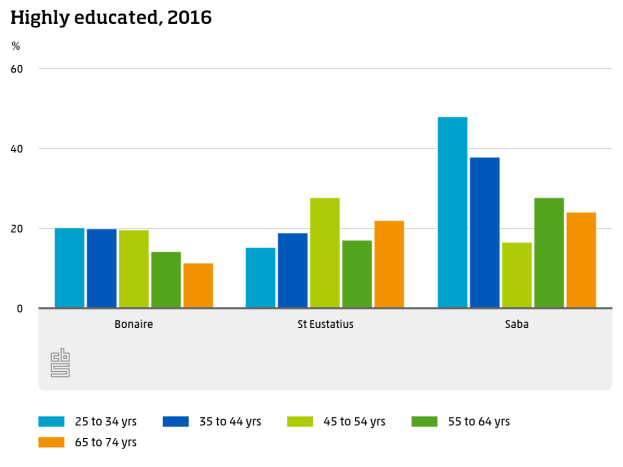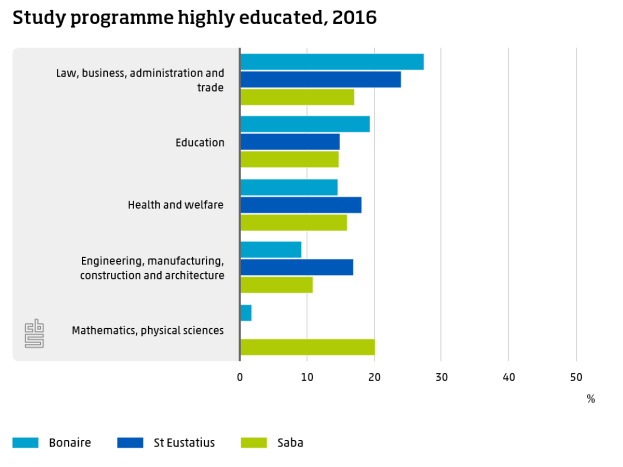CBS: 1 in 3 residents of Saba are highly educated
Among the three islands comprising the Caribbean Netherlands, Saba has relatively many highly educated inhabitants: a share of 33 percent among 25 to 74-year-olds. On Bonaire and St. Eustatius, the respective shares of highly educated inhabitants are 18 and 20 percent.

Popular study programmes in local higher education include law, business, administration and trade. This is evident from new figures on education over 2016 based on the Labour Force Survey Caribbean Netherlands (LFS CN), which is published today by Statistics Netherlands (CBS).
Younger generations are generally more highly qualified than older generations. However, St. Eustatius’ population cohort of 45 to 54-year-olds are better educated than the younger generations; and on Bonaire, the 25 to 34-year-old and 45- to 54-year-old cohorts have similar shares of highly educated. At the same time, the share of Bonairians with medium-level qualifications is increasing among younger generations. In order to pursue higher education, both young Bonairians and Statians are forced to leave their island. Whether they return and, if so, at what age, will depend on employment opportunities available for higher educated people, for example.
Many highly skilled Americans and Canadians on Saba
On Saba, the share of highly educated people among younger generations is larger than among older ones. This is related to the fact that the island houses a university that specialises in medicine. A part of the over-25s are still in education, mostly higher education. For example, 30 percent of those with a high qualification level say they are still in education. In addition, nearly half (47 percent) of highly educated people work in the education sector including the university. Actually, the majority of highly educated people on Saba are American or Canadian nationals and therefore non-native; this is especially the case among those enrolled in education.

More highly educated women than men on Bonaire and St. Eustatius
Women are better represented than men among highly educated on Bonaire and St. Eustatius. For example, 21 percent of female and 16 percent of male Bonairians had obtained a degree in higher professional education (HBO) or university (WO) in 2016; on Statia, these shares were 23 and 18 percent respectively. Conversely, men are in the majority among the lower skilled on both islands. On Saba, there are no disparities between the two sexes in terms of the share of highly educated. However, more women than men on the island have attained medium-level education.
Highly skilled mainly have law, business, administration and trade as study programmes
On Bonaire and St. Eustatius, highly educated people mainly studied law, business, administration or trade. Study programmes popular on Saba are mathematics and physical sciences including biology and biochemistry. This partially applies to those who are still in education. If students are not taken into account, Saba also has law, business, administration and trade as the most popular study programmes.
